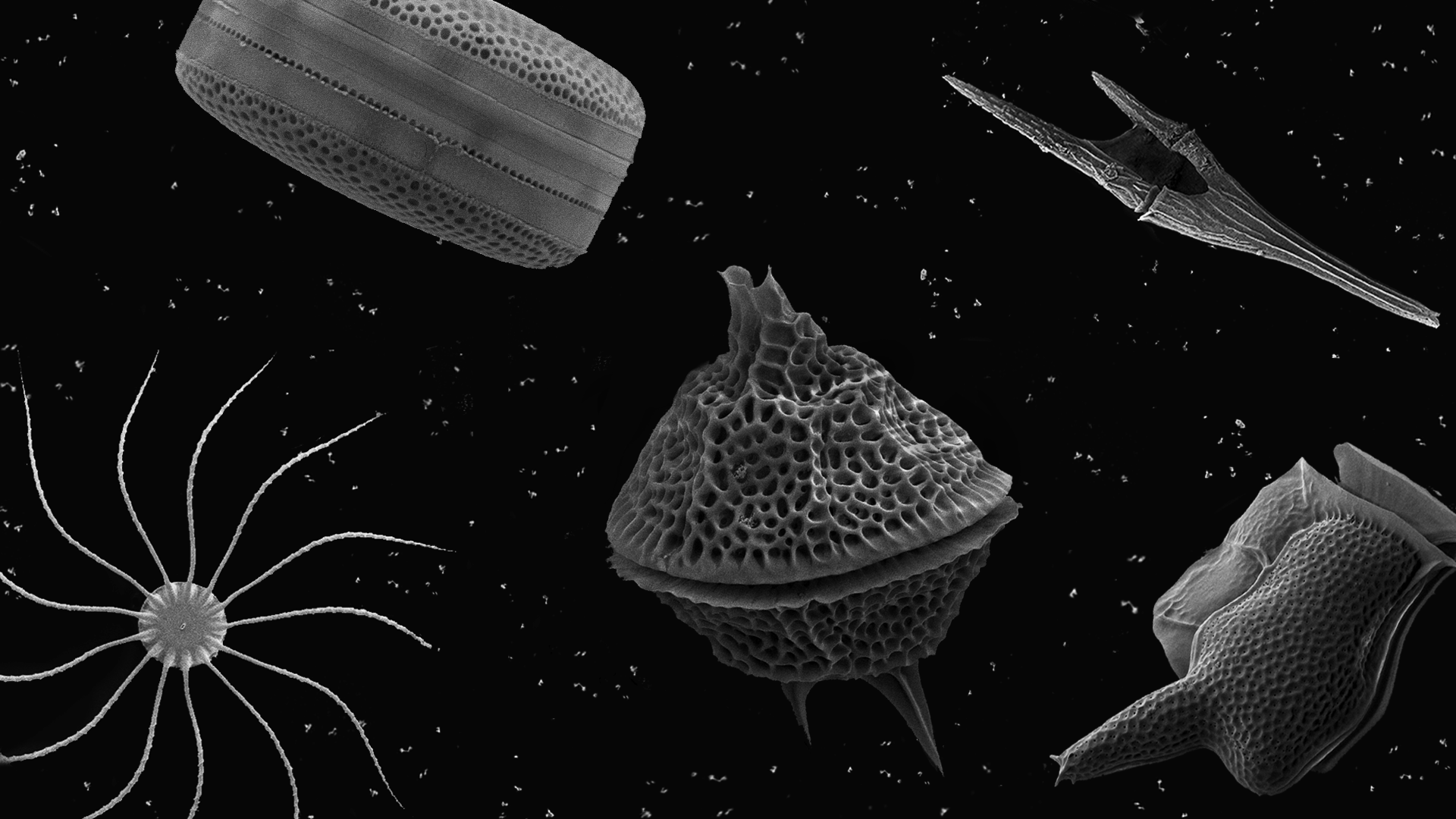Plankton
Small Heroes are Heroes Too

Coscinodiscus sp., Bacteriastrum hyalinum, Protoperidinium sp., Dinophysis caudata, Ceratium furca | Phytoplankton | Photo by Dr. Roswati Md. Amin
The tiny ocean plants, known as phytoplankton, are 100x smaller than the average diameter of a human hair follicle, or equivalent to the size of a bacterium. The small size of a phytoplankton allows it to float in the ocean, drifting according to the ocean current (much like jellyfishes). Despite the miniscule size, they are able to contribute to more than half of the Earth’s oxygen. Like all plants, the phytoplankton photosynthesis process requires the use of sunlight and nutrients, which are acquired from the surroundings environment. Phytoplanktons are also the key food item at the base of the marine food web, making it a valuable asset to the ocean.
Ocean Hope Message: Climate change spells bad news for phytoplankton. As the atmospheric temperature increases, the waters become warmer and less oxygen will be available for the respiration of phytoplankton. One way to help is reduce the transport emission with fuel-less alternatives such as riding a bike.
